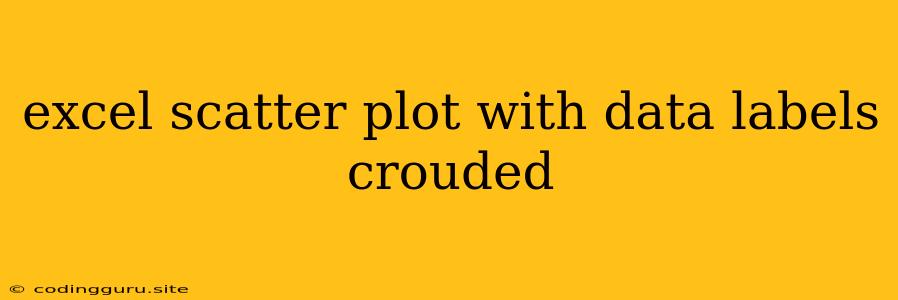Scatter Plots with Data Labels: Taming the Crowd
Scatter plots are a powerful tool for visualizing relationships between two variables. Adding data labels can enhance understanding by providing precise values for each point. However, when dealing with dense datasets, data labels can become overcrowded and obscure the plot's clarity.
This article explores techniques for managing crowded data labels in Excel scatter plots, ensuring both informative display and visual appeal.
The Challenge of Crowded Data Labels
Imagine a scatter plot with hundreds of data points, each with a label. The labels can overlap, creating a jumbled mess that makes it difficult to interpret the data. This situation is common in datasets with high density or when the data points are close together.
Strategies for Managing Crowded Data Labels
Here are some techniques to address the issue of crowded data labels in Excel scatter plots:
1. Adjust Label Placement:
- Automatic Placement: Excel offers automatic label placement options. However, it's often not the most effective, especially with dense data.
- Manual Placement: For precise control, manually position labels by dragging them individually. This can be tedious for large datasets.
- Custom Placement: Utilize formulas and VBA to programmatically position labels based on specific criteria.
2. Label Filtering and Conditional Formatting:
- Filtering: Show labels only for selected data points based on certain criteria, such as those above a certain threshold or in a specific range.
- Conditional Formatting: Use conditional formatting to control label appearance. Highlight labels with significant values or filter out labels based on specific conditions.
3. Data Visualization Techniques:
- Clustering: Group data points into clusters and label the cluster's center point instead of individual data points. This reduces label density while still conveying the data's overall structure.
- Transparency: Reduce label opacity to improve readability when multiple labels overlap.
4. Alternative Data Representations:
- Heatmaps: Represent data with color intensity, using a color gradient to indicate data values.
- Bubble Charts: Use the size of the bubbles to represent a third variable, while the position on the plot remains the same as in a scatter plot.
Example: Using Conditional Formatting to Highlight Significant Values
Steps:
- Create a scatter plot with your data.
- Add data labels to the plot.
- Select the data labels.
- Go to the Home tab and click Conditional Formatting.
- Choose a rule type like "Greater Than" and set a value threshold.
- Select a formatting style, like a bold font or a specific color, to highlight labels that meet the condition.
Example: In a scatter plot of sales data, highlight labels representing sales exceeding $10,000 using a bold red font.
Choosing the Right Approach
The best approach depends on the specific dataset and the goals of the visualization. Consider:
- Data Density: If your data is highly dense, you might want to reduce the number of labels displayed.
- Data Distribution: The distribution of data points will affect the effectiveness of different techniques.
- Visualization Goals: What information do you want to emphasize?
Conclusion
Crowded data labels in scatter plots can hinder clarity and readability. By employing techniques like label filtering, conditional formatting, clustering, and alternative data representations, you can effectively manage label density and create visually appealing and insightful scatter plots. The choice of technique should be driven by the specific data and the desired visualization goals.
